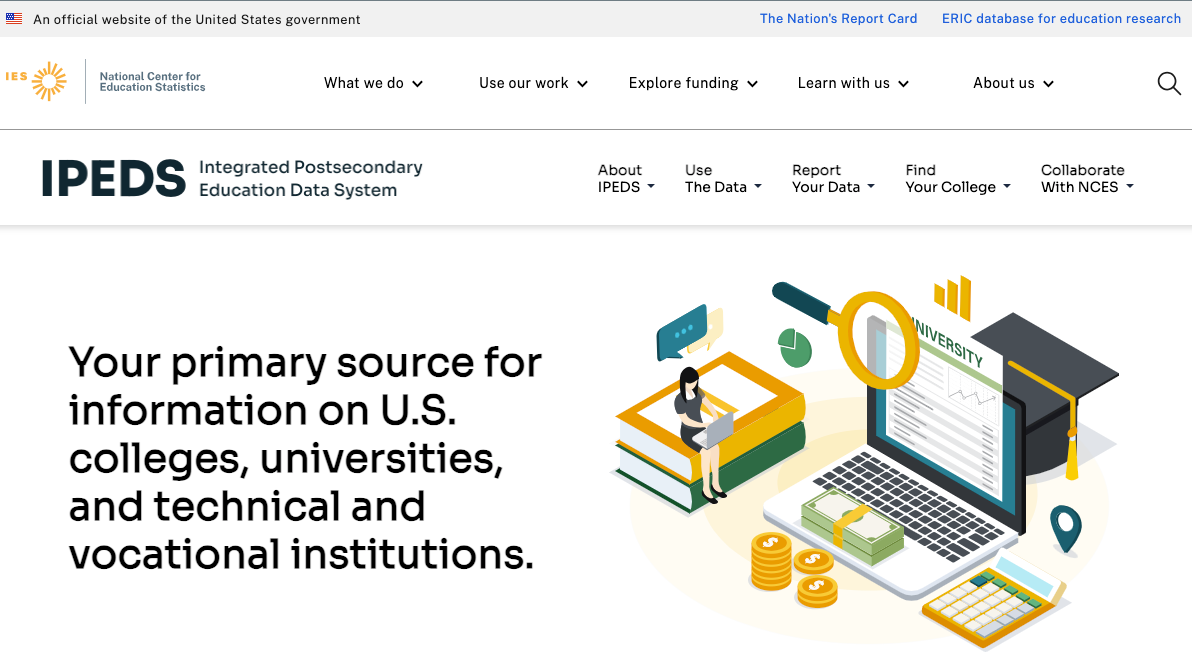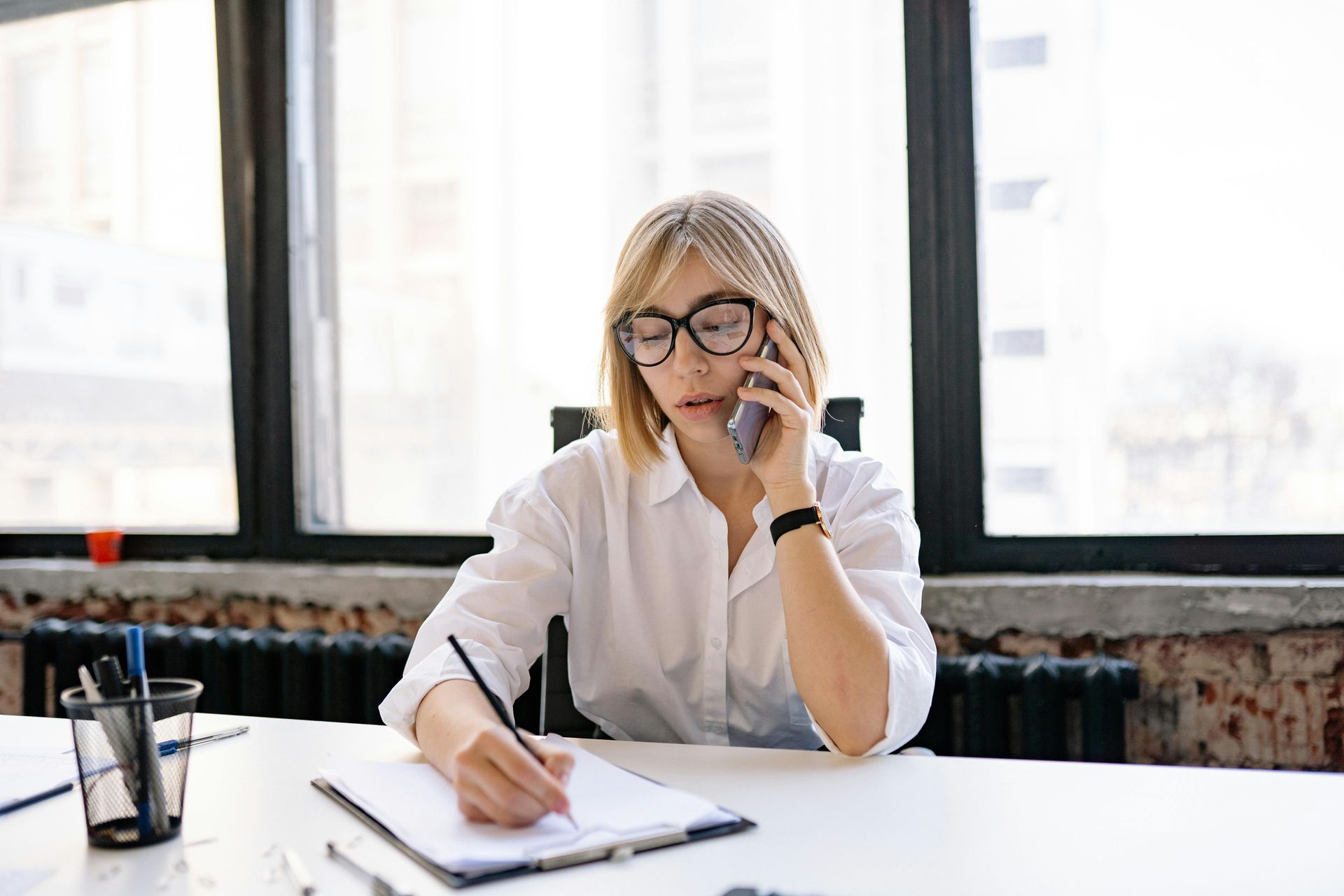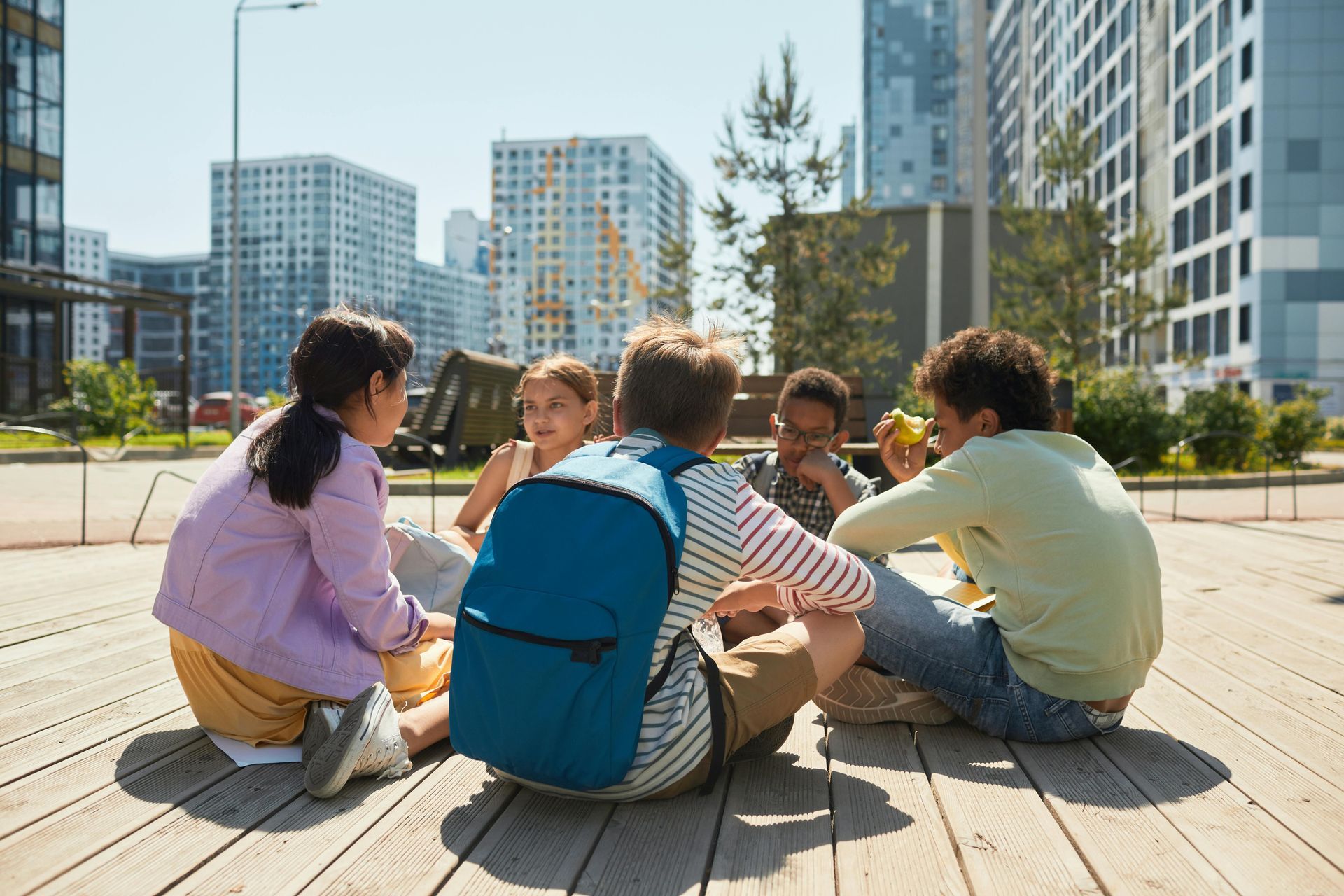Odyssey College Prep and the CEO of Powerful Prep. Marc uses advanced aptitude testing to simplify the college admissions process for students and parents. He also guides students to create targeted passion projects to differentiate their college applications. He currently serves as the Highlands Company’s ambassador to CounselMore. In that role, he enjoys helping other college counselors use aptitude testing to enhance their business. As an active member of CounselMore’s community, Marc hosts CounselMore’s Mentorship Circle, where college counselors can learn from one another and instruct each other in best practices.

Pay Attention! Early Action and Decision
After all your hard work in applying to colleges, you want to know if you have been accepted! Decisions could be coming sooner than you think if you’ve applied Early Decision (ED) or Early Action (EA), with most ED notifications coming before December 15th and most EA notifications coming by February. Make sure to check college early action notification dates in this article.
Early Action
If a school offers early action, this means that they have the option to submit your application earlier than the rest of the “regular” applications. This is paired with an earlier decision notification to you - the applicant. Most early action decision notification dates are before February, except for Northeastern University. The Northeastern early action notification date is February 15th for the class of 2028. More typical early action notification dates are in December or January. Some typical examples would be MIT and the University of Wisconsin. For the class of 2028, the MIT early action notification date was December 17th, and the University of Wisconsin early action notification date was January 28th. Other schools like the University of Vermont more generally state that the UVM early action notification date will be in late December.
Early Decision
Early decision is a binding application. It commits an applicant to attending that school if admitted. Applying ED also significantly boosts your chances of getting accepted. This is because colleges are motivated to have a high yield rate (or rate of people who enroll after being accepted). Admitting applicants who are committing to enroll if accepted increases a school’s yield rate, so you’re much more likely to be accepted if you apply ED. This makes applying ED a great option for those who are confident in a particular school. Notification dates for those applying ED will come pretty early, with most decisions being announced before December 15th.
Single Choice Early Action or Restrictive Early Action
Single Choice Early Action (SCEA) or Restrictive Early Action (REA) is an option given by some more elite schools. Think of this type of application as a hybrid between EA and ED. You apply early and agree not to apply ED to anywhere else (like the ED process), but it is also non-binding (like an EA application). This is an option at schools that are more comfortable with their yield rate and don’t feel the need to lock students into a binding agreement. CalTech, Harvard, Princeton, Stanford, University of Notre Dame, and Yale are examples of this.
Download a printable copy of the list
North East Colleges
American University (40.6% acceptance rate)
- ED I: by 12/31
- ED II: by 2/15
Amherst College (7% acceptance rate)
- ED: early to mid-December
Babson College (22.3% acceptance rate)
- ED I: mid-December
- EA: by 1/1
- ED II: mid-February
Bates College (13.3% acceptance rate)
- ED I: by 12/20
- ED II: by 2/15
Barnard College (8.8% acceptance rate)
- ED: mid-December
Bentley University (58% acceptance rate)
- ED I: late December
- ED II: early February
Boston College (16.7% acceptance rate)
- ED I: by 12/15
- ED II: by 2/15
Boston University (14.4% acceptance rate)
- ED I: mid-December
- ED II: mid-February
Bowdoin College (9.2% acceptance rate)
- ED I: mid-December
- ED II: early February
Brandeis University (39.4% acceptance rate)
- ED I: 12/15
- ED II: 2/1
Brown University (5.1% acceptance rate)
- ED: by mid-December
Bryant University (68.8% acceptance rate)
- ED I: by 12/1
- EA: mid-January
- ED II: by 2/15
Bryn Mawr College (31% acceptance rate)
- ED I: late December
- ED II: mid-February
Bucknell University (32.6% acceptance rate)
- ED I: mid-December
- ED II: mid-February
Colby College (7.6% acceptance rate)
- ED I: by 12/15
- ED II: by 2/15
Colgate University (12.4% acceptance rate)
- ED I: mid-December
- ED II: mid-February
College of the Holy Cross (36.4% acceptance rate)
- ED I: 12/15
- ED II: 2/15
Columbia University (3.9% acceptance rate)
- ED I: 12/15
Connecticut College (40.4% acceptance rate)
- ED I: mid-December
- ED II: mid-February
Cornell University (7.5% acceptance rate)
- ED I: 12/15
Dartmouth College (6.4% acceptance rate)
- ED: by mid-December
Dickinson College (35% acceptance rate)
- ED I: mid-December
- ED II: late February
Emerson College (42.7% acceptance rate)
- ED I: mid-December
- EA: mid-January
- ED II: early February
Fordham University (54.1% acceptance rate)
- ED I: 12/20
- EA: 12/20
- ED II: 2/15
Franklin & Marshall College (36.2% acceptance rate)
- ED I: by 12/15
- ED II: by 2/15
Georgetown University (12.2% acceptance rate)
- EA: by 12/15
Gettysburg College (56.3% acceptance rate)
- ED I: by 12/15
- ED II: by 2/15
Hamilton College (11.8% acceptance rate)
- ED I: by 12/15
- ED II: by 2/15
Harvard University (3.2% acceptance rate)
- REA: mid-December
Haverford College (14% acceptance rate)
- ED I: 12/15
- ED II: early February
Johns Hopkins University (7.3% acceptance rate)
- ED I: 12/15
- ED II: 2/16
Lafayette College (33.6% acceptance rate)
- ED I: 12/15
- ED II: 2/15
Lehigh University (37% acceptance rate)
- ED I: mid-December
- ED II: mid-February
Massachusetts Institute of Technology (4% acceptance rate)
- EA: mid-December
Middlebury College (13% acceptance rate)
- ED I: mid-December
- ED II: mid-February
Mount Holyoke College (52% acceptance rate)
- ED I: late December
- ED II: late January
Northeastern University (6.8% acceptance rate)
- ED I: by 1/1
- ED II: by 3/1
- EA: by 2/15
New York University (12.5% acceptance rate)
- ED I: 12/15
- ED II: 2/15
Pratt Institute (50.4% acceptance rate)
- EA: by mid-December
Princeton University (5.7% acceptance rate)
- SCEA: mid-December
Providence College (52.8% acceptance rate)
- ED I: by 12/1
- EA: by 1/1
- ED II: by 3/1
Rhode Island School of Design (19% acceptance rate)
- ED I: mid-December
Skidmore College (25.5% acceptance rate)
- ED I: mid-December
- ED II: mid-February
Smith College (22.9% acceptance rate)
- ED I: mid-December
- ED II: late January
Swarthmore College (7% acceptance rate)
- ED I: mid-December
- ED II: mid-February
Syracuse University (51.8% acceptance rate)
- ED I: late December (rolling)
- ED II: late January (rolling)
Trinity College (36.1% acceptance rate)
- ED I: by mid-December
- ED II: by mid-February
Tufts University (10% acceptance rate)
- ED I: by 12/15
Union College (46.5% acceptance rate)
- ED I: by 12/15
- EA: late December
- ED II: by 2/15
University of Rochester (38.9% acceptance rate)
- ED I: mid-December
- ED II: early February
University of Vermont (59.8% acceptance rate)
- ED: 12/1
- EA: late December
Vassar College (18.7% acceptance rate)
- ED I: mid-December
- ED II: early February
Villanova University (23% acceptance rate)
- ED I: by 12/15
- EA: by 1/20
- ED II: by 2/15
Wellesley College (16% acceptance rate)
- ED I: mid-December
- ED II: mid-February
Wesleyan University (14.4% acceptance rate)
- ED I: 12/10
Williams College (8.5% acceptance rate)
- ED: by 12/15
Yale University (4.6% acceptance rate)
- SCEA: mid-December
Midwest
Carleton College (16.6% acceptance rate)
- ED I: by 12/15
- ED II: by 2/15
Case Western Reserve University (27.4% acceptance rate)
- ED I: 12/2
- EA: 12/19
- ED II: 2/10
Grinnell College (11% acceptance rate)
- ED I: mid-December
- ED II: early February
Indiana University- Bloomington (82.5% acceptance rate)
- EA: by 1/15
Macalester College (28% acceptance rate)
- ED I: 12/3
- EA: 12/20
- ED II: 1/28
Northwestern University (7.2% acceptance rate)
- ED: December
Oberlin College (34% acceptance rate)
- ED I: by 12/15
- ED II: by 2/1
The Ohio State University (52.7% acceptance rate)
- EA: by 1/31
Purdue University- Main Campus (52.7% acceptance rate)
- EA: 1/15
University of Chicago (5.4% acceptance rate)
- ED I: mid-December
- EA: mid-December
- ED II: mid-February
University of Illinois at Urbana-Champaign (44.8% acceptance rate)
- EA: 1/26
University of Michigan (17.7% acceptance rate)
- EA: by late January
University of Minnesota- Twin Cities (74.9% acceptance rate)
- EA I: by 1/31
- EA II: by 2/15
University of Notre Dame (12.9% acceptance rate)
- REA: mid-December
Washington University in St. Louis (11.8% acceptance rate)
- ED I: by 12/15
- ED II: by 2/16
West or Western Colleges
California Institute of Technology (2.7% acceptance rate)
- REA: mid-December
Chapman University (72.5% acceptance rate)
- ED: mid-December
- EA: mid-December (rolling)
Claremont McKenna College (10.4% acceptance rate)
- ED I: by 12/15
- ED II: by 2/15
Colorado College (20% acceptance rate)
- ED I: mid-December
- EA: late December
- ED II: mid-February
Harvey Mudd College (13.4% acceptance rate)
- ED I: 12/15
- ED II: 2/15
Loyola Marymount University (41.3% acceptance rate)
- ED I: mid-December
- EA: mid-December
- ED II: mid-February
Occidental College (39.4% acceptance rate)
- ED I: 12/15
- ED II: 2/20
Pitzer College (18.4% acceptance rate)
- ED I: by 12/18
- ED II: by 2/15
Pomona College (7% acceptance rate)
- ED I: by 12/15
- ED II: by 2/15
Santa Clara University (52.1% acceptance rate)
- ED I: late December
- EA: late December
- ED II: mid-February
Scripps College (28% acceptance rate)
- ED I: mid-December
- ED II: mid-February
Stanford University (4% acceptance rate)
- REA: by mid-December
University of Denver (77.7% acceptance rate)
- ED I: early December
- EA: late December (rolling)
- ED II: mid-February
University of Southern California (12% acceptance rate)
- EA: mid to late January
South or Southern Colleges
College of Charleston (75.7% acceptance rate)
- ED I: 12/1
- EA (in-state): 12/1
- EA (out-of-state): 12/15
- ED II: 3/1
Davidson College (16.9% acceptance rate)
- ED I: by 12/16
- ED II: by 1/31
Duke University (6.3% acceptance rate)
- ED: mid-December
Elon University (74.5% acceptance rate)
- ED I: 12/1
- EA: 12/20
Emory University (11.4% acceptance rate)
- ED I: by 12/15
- ED II: by 2/15
George Washington University (49% acceptance rate)
- ED I: by late December
- ED II: by late February
University of Georgia (42.5% acceptance rate)
- EA: by 12/1
University of Miami (18.9% acceptance rate)
- ED I: by mid-December
- EA: by late January
- ED II: by late February
University of North Carolina- Chapel Hill (17.1% acceptance rate)
- EA: 1/31
University of Richmond (24.4% acceptance rate)
- ED I: around 12/15
- EA: around 1/25
- ED II: around 2/15
University of Virginia (18.7% acceptance rate)
- ED: by 12/15
- EA: by 2/15
Vanderbilt University (6.7% acceptance rate)
- ED I: mid-December
- ED II: mid-February
Wake Forest University (21.4% acceptance rate)
- ED I: Rolling
- EA: by 1/15
- ED II: around 2/15
Washington & Lee University (17% acceptance rate)
- ED I: 12/15
- ED II: 2/1
William & Mary (33.5% acceptance rate)
- ED I: early December
- ED II: early February
Download a printable copy of the list
Conclusion
Applying Early Decision or Early Action CAN dramatically impact your college application strategy. Keep these things in mind:
● With Early Action, you get to submit your applications and receive your results earlier without the binding commitment, giving you the flexibility to consider multiple options.
● Early Decision, on the other hand, offers a higher chance of acceptance with the commitment to attend if accepted—perfect for those who have a clear first choice.
● For the elite schools, Single Choice Early Action or Restrictive Early Action blends the benefits of both without the binding nature, giving you the best of both worlds.
As you wait for your notification dates, keep track of each school's timelines to stay ahead. Knowing when you’ll hear back can help you manage your expectations and plan your next steps. Applying early gives you peace of mind and a head start in college planning. Remember, stay informed, stay organized, and keep your eye on the long game. It’s a lot of work, but it ensures your work pays off.
Happy Testing!
-Marc



















